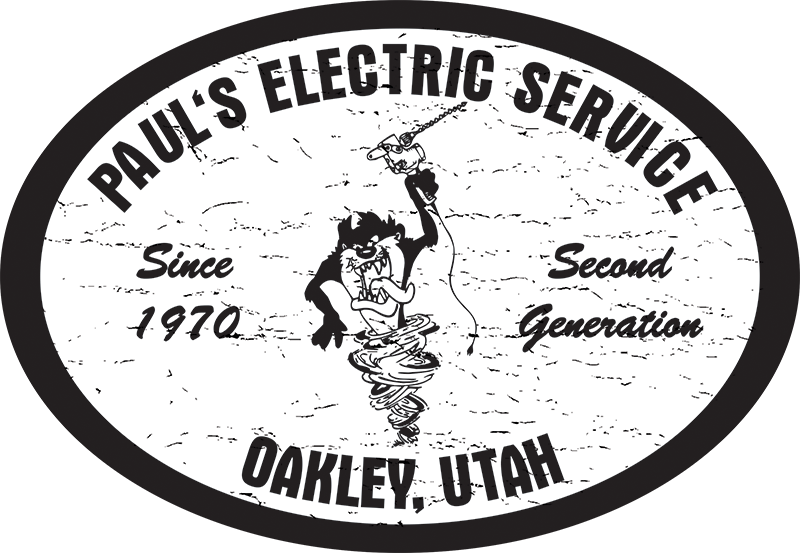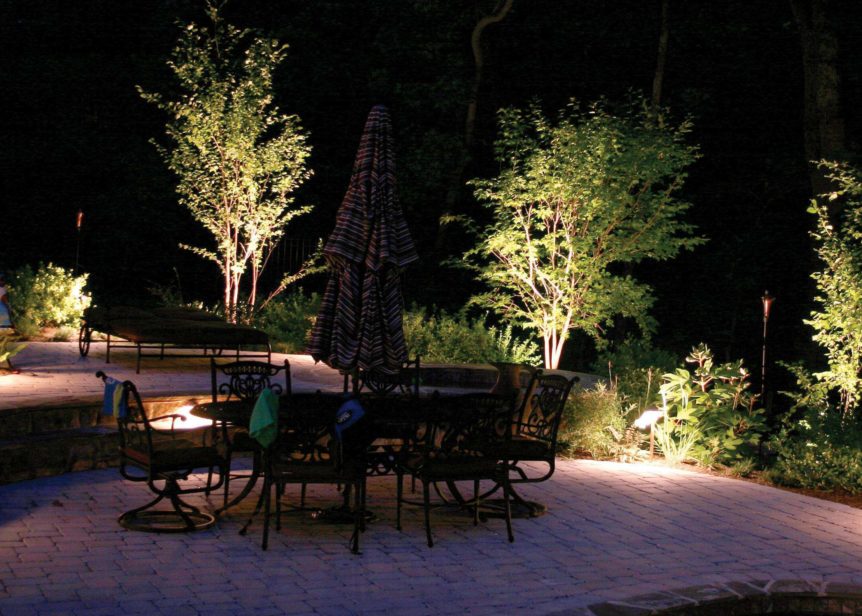When it comes to landscape lighting, things can get tricky, follow these tips and you’ll be sure to succeed!
Landscape Lighting: a question for the ages. How much is too much? Is placement all that important? In this article, we will give you some tips and tricks on things to be on the lookout for when considering your landscape lighting.
Highlighting
This is a common and quite useful technique in outdoor lighting. Highlighting is created by placing a spotlight at the base of an outdoor feature. By varying the distance and angle of the light fixture, you can experiment with different lighting designs for unique landscape architecture goals. For example, trees often need two or more fixtures to provide sufficient illumination.
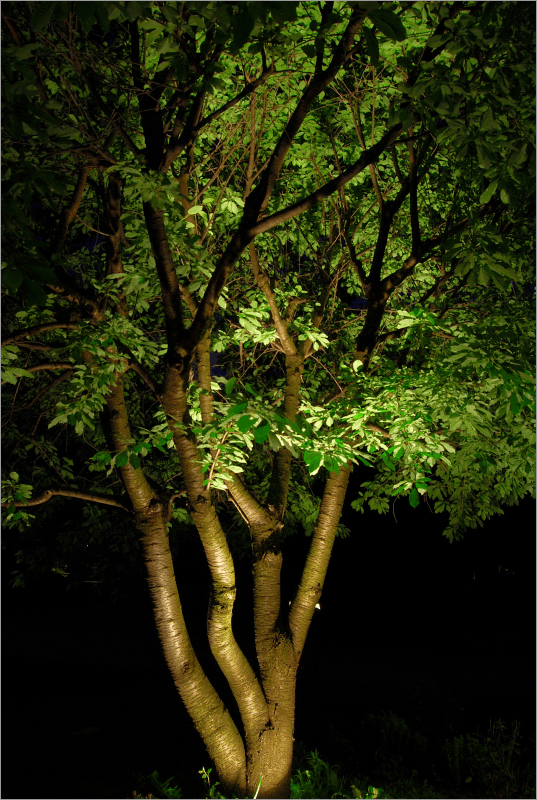
Silhouetting
By placing a spotlight behind the feature, aimed towards an adjacent wall, you can create an illuminated backdrop. This dark outline of the object is useful for showcasing plants and other dense features. It looks especially striking in the sunset.
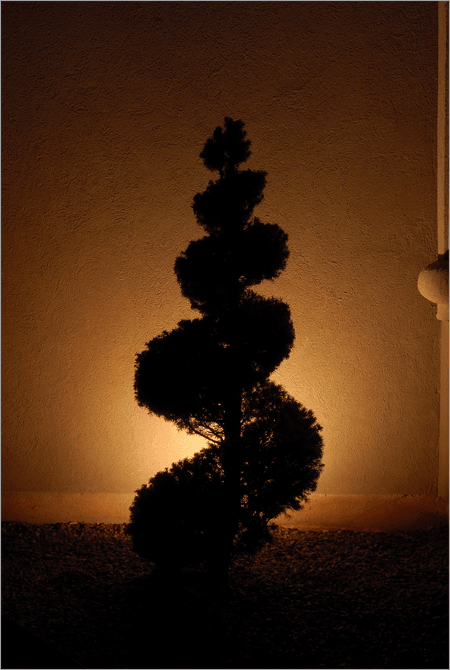
Shadowing
A similar technique to silhouetting, shadowing also places the fixture towards the base of the feature, aimed towards an adjacent wall. However, the goal is to create a softer shadow, and often works best with a tree that has open, delicate foliage. The effect of the tree’s movement in the wind is sure to add drama to any home facade.
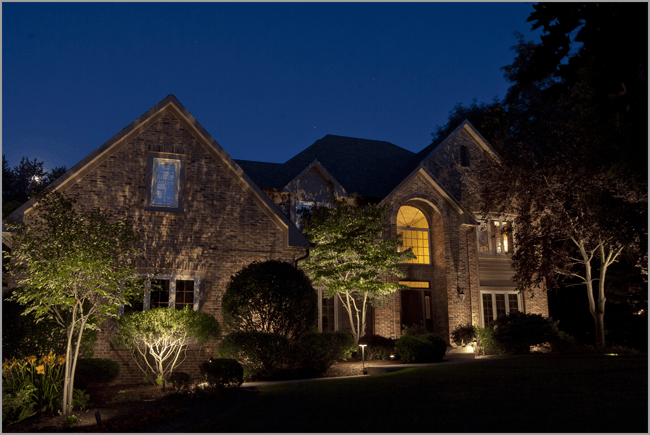
Wall-washing
Wall-washing creates a soothing and even glow that comes off the wall or facade it’s pointed towards. For best results, place the lighting fixture a few feet away from the feature, and give it a sideways angle. By shining along side the wall, it maintains an even and somewhat subtle ambient lighting for the nearby area. A wide angle flood light with low wattage is recommended for this, as opposed to a spotlight.
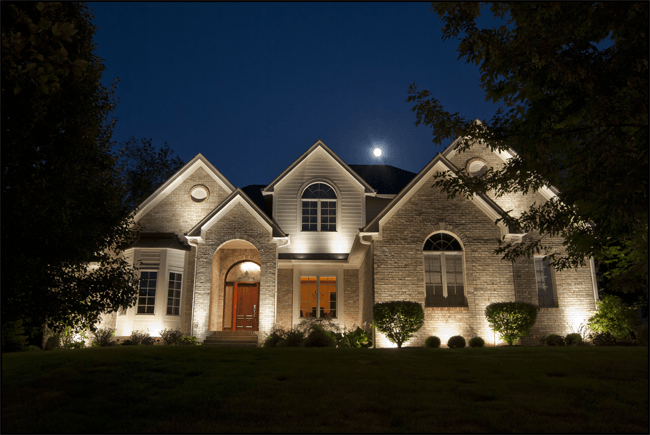
Up-lighting
Offering a greater contrast effect than typical wall-washing, spotlight fixtures are placed closer to a building for a bolder effect.
Moonlighting
Create moonlighting techniques by placing a large fixture with a full glare guard high up inside a tree, and angled downwards. This effect looks like moonlight shining down through the branches. It causes attractive shadow patterns on the ground to appear, plus it provides a very natural and beautiful lighting effect.
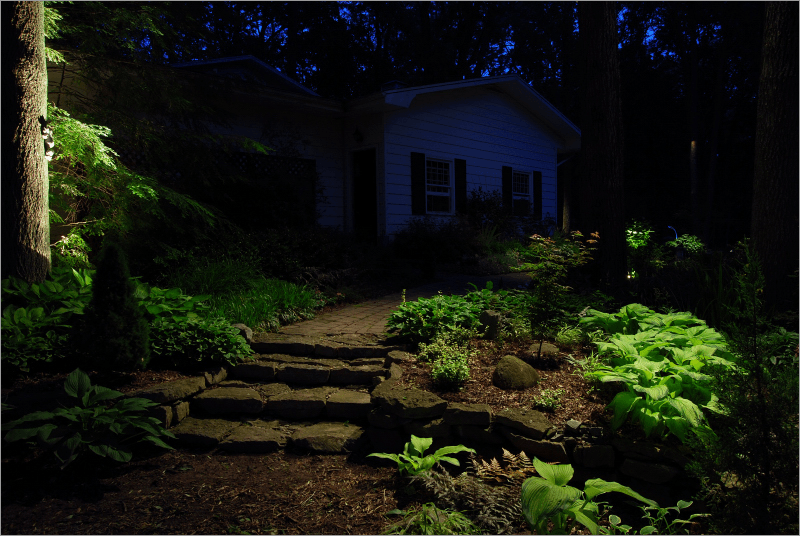
Down-lighting
The down-lighting technique is similar to the moonlighting technique, although brighter and less subtle. Place a fixture high up, inside a feature like a trellis, tree, or eave, and cast downwards over a large area. Place the light higher if you intend to illuminate a large portion of the yard, and lower if you wish to illuminate a path or garden.
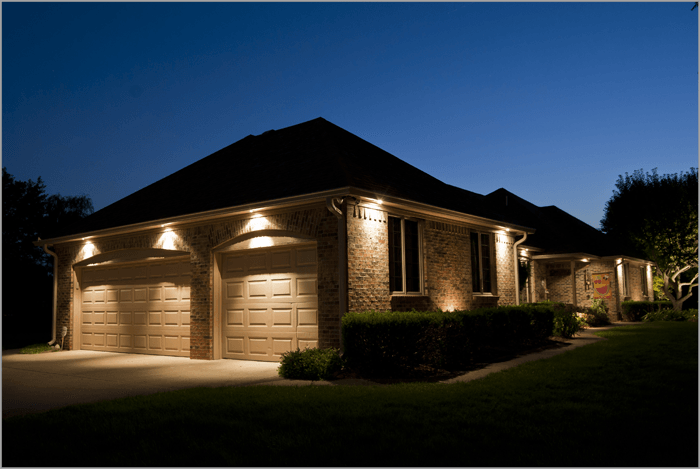
Accenting
Any lighting that draws special attention to a specific feature is considered accent lighting. Specifically angled up-lighting or down-lighting can be used as accent lighting, to point out an architectural design, plant, or other feature. Try using a narrow beam spotlight from a hidden fixture to add a flair of mystery to your accent lighting.
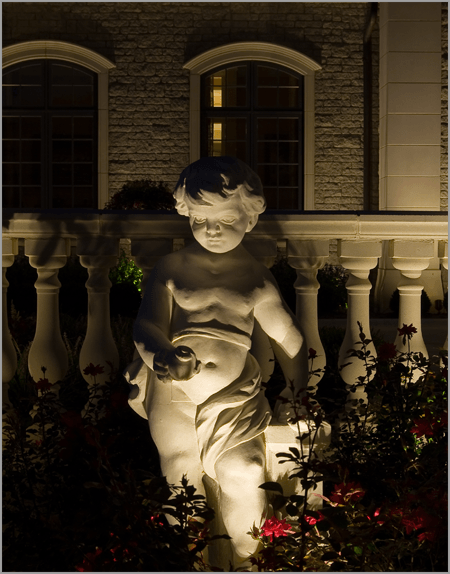
Path-lighting
Path-lighting is created by placing small fixtures along the borders of walkways, driveways, and patios. It is important that the style of these path lights be considered carefully. It is also important to be sure that they are positioned to illuminate the path, but also placed so that they avoid being kicked, moved, or getting in the way of the lawnmower.

Click Here to read more articles!
